Case Study: Puerta de Esperanza
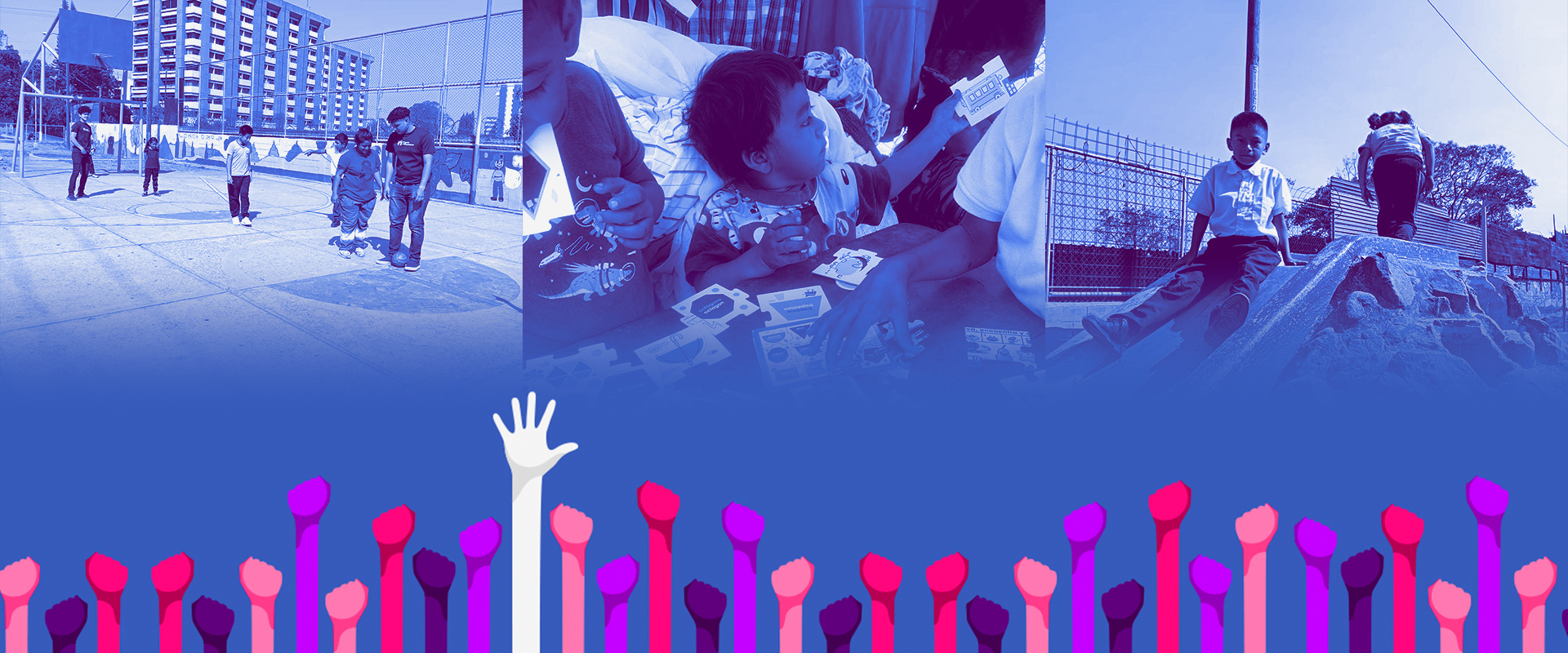
A hope in the midst of shops, criers and merchandise
Deep within Guatemala City, there lives a world deeply connected to the norms and dynamics of the capital, but it is also a world with a life of its own. From sunrise to sunset, amidst the streams of people and the roaring of trucks transporting goods, the commercial hustle never stops. This market scene is one of the city's most significant and expansive: La Terminal.
La Terminal is unique because, beyond being a commercial hub, it is a community with its own organizations and social norms. The market population includes not only traders and merchants but also nuclear and extended families. Some live in the very spaces where they operate their businesses or nearby, integrating their entire household, including children and youth, into La Terminal's commercial dynamics, prioritizing business and economic needs above all else.
Traders and merchants are organized according to price regulations, community security, and space distribution. There even exists a Vendors' Committee that oversees the general dynamics of La Terminal.
Despite the absence of the state, this commercial society at La Terminal has formed its own structure. The market hasn't been entirely planned in terms of efficiency and urban life, leading to areas of precariousness and inequality, which have been core and real problems.
Recently, the state's presence has been viewed as an obstruction, a detriment, or opportunistic by the market population. However, the Vendors' Committee has recently politicized, gaining political power aligned with partisan interests, moving away from representing the general population's needs and dangerously close to illegitimate agendas that benefit specific groups and politicians.
In this context, where the state is absent to provide basic and decent conditions of urban life, where the market has been co-opted by the Committee of Vendors that unfairly profits from the income of merchants,, La Terminal festers social problems.
A volunteer who frequently visited La Terminal knew the unequal realities of the market all too well. In 2012, she worked for an organization focused on addressing the street situation of La Terminal's population. That year, she proposed a drug and violence prevention project, but the organization shut down due to lack of funding.
Thanks to her previous work and background in social and missionary programs, she was nominated for an international award by Tearfund, which she won, receiving funds. She decided to spend a year volunteering in Panama and Costa Rica while thinking about what to do with the money. However, her heart remained with La Terminal.
Acknowledging the extensive needs and challenges faced daily by the market's population, she was still committed to her prevention idea proposed before the organization's closure.
After a year, she returned in December 2012 to work full-time at La Terminal, leading to the creation of the Association Puerta de Esperanza.
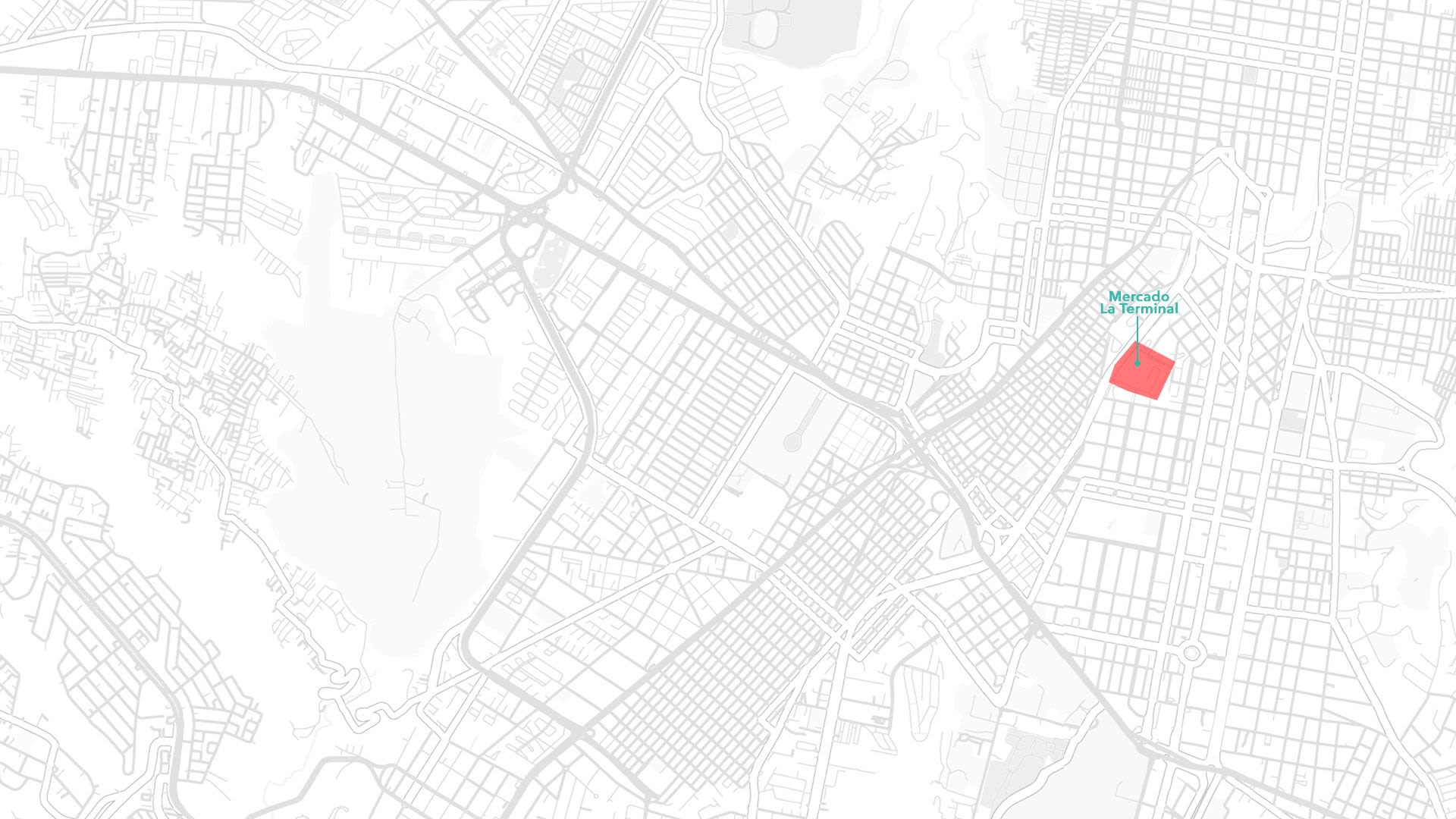
Historical Context of La Terminal
Before delving into the story of Puerta de Esperanza, understanding La Terminal's historical context is necessary.
La Terminal is located in Guatemala City, between zones 8 and 4. It emerged in the mid-20th century as Guatemala's largest bus station, where transport from the west, east, and south of the country arrived. Gradually, commerce took over, expanding over time to become a central supply and wholesale hub. Its location was influenced by the urban planning of the time, close to financial areas, luxury residences, and the dynamic commercial axis of Avenida Bolívar. After the beginning of the democratic era in 1985, informal commerce grew.
Due to the informal nature of the market, there are no laws, regulations, or norms governing coexistence, taxation, labor, or fiscal matters. Hence, the organization and structures of the merchants are one of La Terminal's features, even taking charge of security. Each sector has implicit rules, making it a dynamic, changing, and complex space.
Notably, when the city council attempted to move La Terminal to CENMA (Central de Mayoreo), the organization and structure of the merchants resisted, and they remained in this sector.
Moreover, the social organization of the market led to the formation of the Vendors' Committee of La Terminal, a powerful structure within the market. This committee handles parking, security, and maintenance. However, financial management is not transparent, and many have reported power abuses by its members. The Committee's power extends beyond the streets and avenues it comprises, having supported former presidents Jimmy Morales, Alejandro Giammattei, and presidential candidate Sandra Torres in past years.
The market hosts various populations, including migrants, entire families, indigenous people, or residents of the capital. Among these groups, working children and those in street situations stand out. This sector of the city has been excluded, abandoned, and stigmatized, often labeled as "dangerous."
The lack of regulation by the state within the market has led to disorder and inequality. The absence of decent urban conditions and basic services has resulted in overcrowding, lack of public services, unregulated rent, and prevalent illiteracy. In a society where commerce prevails due to survival needs, child labor is a common phenomenon. There are only three public schools in La Terminal.
The market has suffered losses over the years, including several fires, during which market residents lost their products and stalls. In fact, one of the schools within La Terminal, which offered education for overage children who are no longer accepted in educational institutions, burned down during a fire in 2014. DIGEEX has been responsible for accrediting the accelerated primary education provided in the market.
Lastly, La Terminal was severely affected by the COVID-19 health emergency. The informal sector was impacted by the restrictions (mobility, quarantine, curfew) imposed by regional governments. On various occasions, products were lost due to the country's closure, negatively impacting the economy of the households involved. Sales dropped, and producers also faced difficulties in mobilizing. Customers stayed away from the stalls due to fear of contagion and presidential orders.
This scenario severely affected the commercial activities of the market, significantly worsening the economic insecurity already present within the market community, as families saw their incomes worryingly reduced. Parallel to this, educational establishments were closed due to social restrictions, confining children and youth to domestic confinement. This situation endangers the futures of student children and youth, as many families misunderstand that their children are without significant occupation. With this, the possibilities and tolerance for child labor could exacerbate.

The beginings of Puerta de Esperanza
Following the closure of the organization she worked for twelve years and the unexpected award acquisition, the volunteer who later became the director of Puerta de Esperanza saw many possibilities, but at the center remained an unmovable image on the horizon: La Terminal.
Returning from her volunteer trips, she decided to continue the work developed by the organization at La Terminal. However, due to the absence of the organization, she had to manage to conceive a project that was essential for the market population.
Nevertheless, from the beginning, she was clear about the problem of starting a project distanced from the most important and unavoidable needs of the people of La Terminal. Therefore, she resolved to dedicate an entire year, all of 2013, to deeply understand the market and the most pressing issues for its population. It was a fundamental field process that would lay the foundations for the educational work of Puerta de Esperanza.

"I would go to different places in La Terminal. I would go to the dump, and there I would sit on those paint buckets they use as stools. There I would sit and talk with one lady, then another, because I didn't want to say 'hey, let's do this,' but rather it was about what they considered the need."
Thus, it was a year of making rounds, observing the dynamics and reality of the market. Additionally, she conducted regular visits to mothers and youth to understand their main needs and, above all, to know their life stories. Conceptually, 2013 was a period for forging trusting relationships with families that would later become part of the programs of Puerta de Esperanza.
From this annual exercise of observation and regular visits, families expressed a common urgency: education. Mainly, mothers were concerned about their children's education because they had difficulties with schoolwork or were not studying because they were not enrolled.
On the other hand, the director identified that education was not a need exclusive to the children. The mothers themselves were illiterate; they could not read or write. Illiteracy prevented them from accompanying and attending to their children's schooling.
It also hindered their commercial activities. For example, the mothers filled sacks of recyclable material they exchanged for money. However, the director noticed that recycling agents falsified the scales and record books unbeknownst to the mothers, who were unaware of the scam due to their illiteracy.
With all this, by taking education as the center of needs by the end of 2013, the Association Puerta de Esperanza was legally registered, and the following year they launched the first program: school reinforcement.
Initially, they rented a room made of sheets where they convened the first youth from the families of the observation and visit process who received the program. On the other hand, for several youths, it was impossible to leave the businesses where they worked. Puerta de Esperanza did not forget them and implemented "street work." Thus, educators from the organization directly visited the business stands and premises of these youths to work on the school reinforcement program.
These first programs and steps concerning education were the foundations on which they built the alternative pedagogy of Puerta de Esperanza.

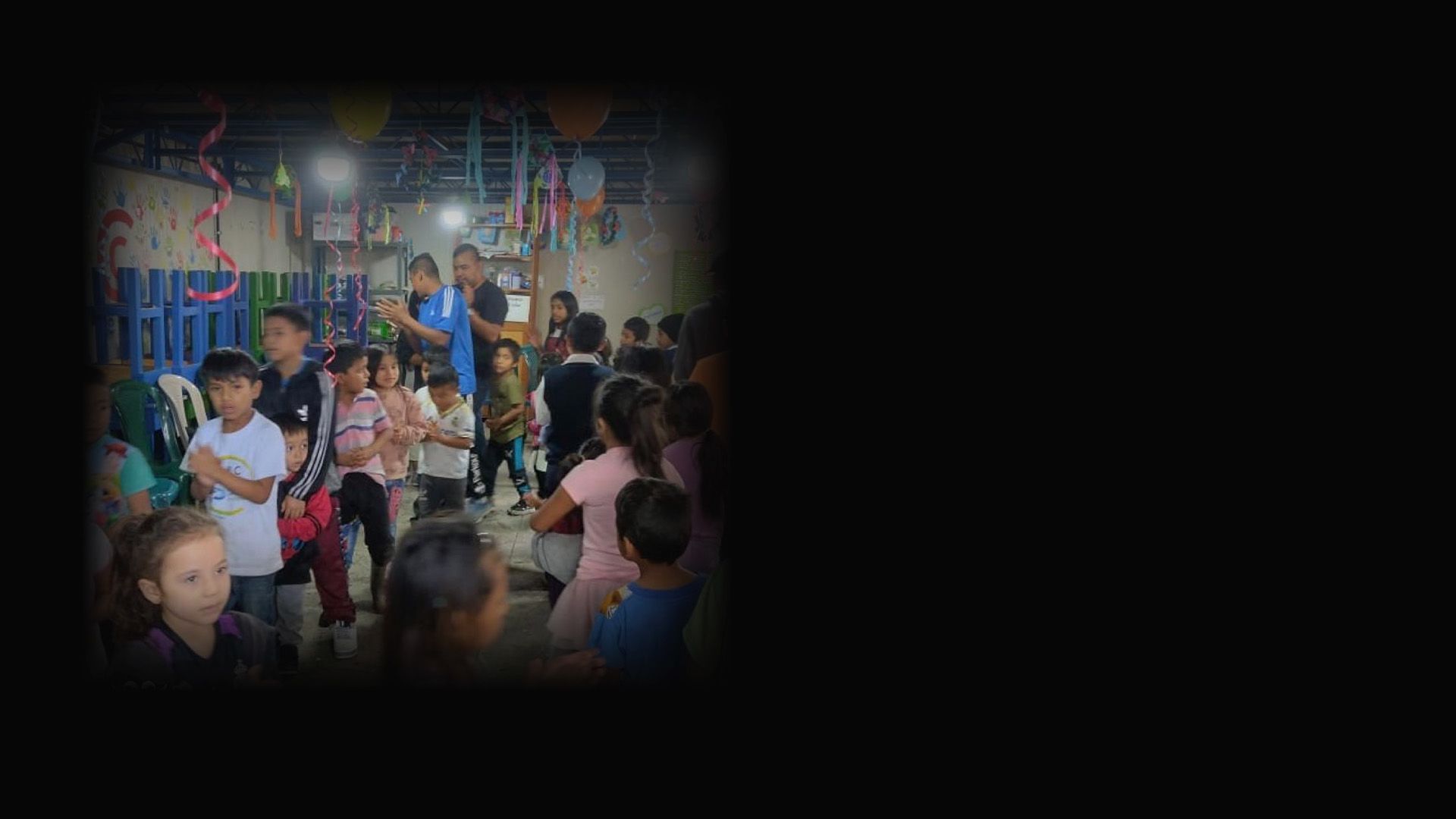
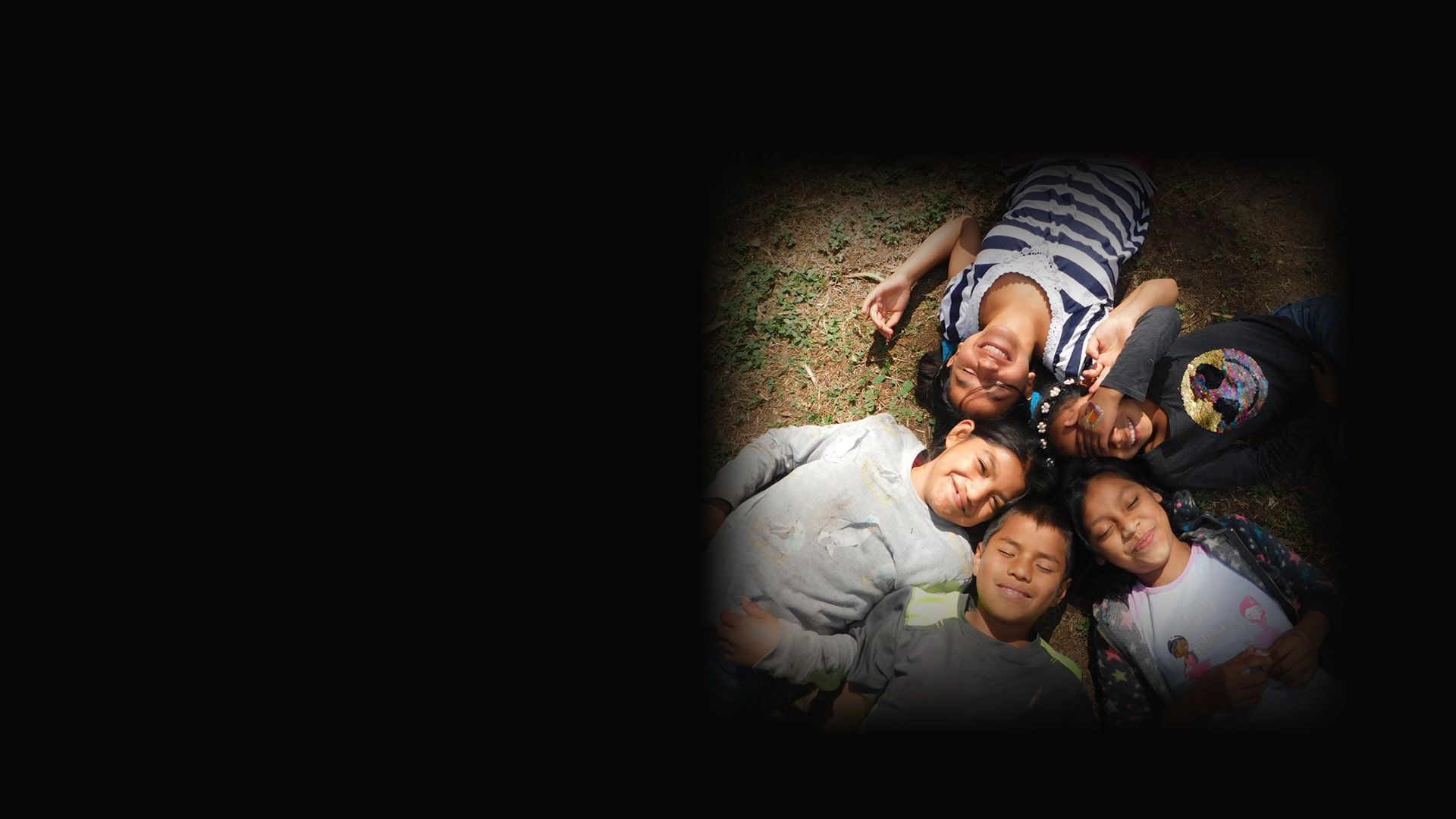

The alternative pedagogy of Puerta de Esperanza
The educational work of Puerta de Esperanza has been present from the beginning1, resulting from the urgencies expressed by mothers and youth during the field process. Over the years, they have added and strengthened educational programs to the point of defining their own pedagogy.
At its core, the educational principle of Puerta de Esperanza is to make education as accessible as possible in La Terminal. Hence, the association's pedagogy takes into account street and alternative educational work, whose programs aim to bring education closer to the market families. It is not only a principle but a necessity in a context where youth are caught between urban precariousness and commercial hustle.

School reinforcement: accompaniment and recreation
Mothers and youth from the observation and visit process urged a need: accompaniment in learning and tasks. From there, school reinforcement was the first educational program developed by Puerta de Esperanza.
Half of the program's foundation is to accompany young students from public schools in their educational formation, with educators assisting them in completing homework and school projects. The other half consists of recreational programs planned and carried out by Puerta de Esperanza with the participating youth. In a context dominated by commercial dynamics and economic survival, where neglecting business equates to suffering irrecoverable losses, recreation is foreign to the urban life of the market.
Therefore, at Puerta de Esperanza, they consider fundamental spaces and occupations for fun and leisure for youth trapped in commerce and work. The vacation course has been a program within this recreational area. After the school cycle, November and December have been vacant and holiday months for the youth. Puerta de Esperanza has taken advantage of this period to offer excursions and recreational activities.
Over the years, Puerta de Esperanza has resided in different locations where they gathered the participating youth to receive school reinforcement. Initially, they were small sheet-metal rooms rented within the market.
Later, they associate themselves to the public daycare center of La Terminal2. Puerta de Esperanza linked up with the Ministry of Social Welfare (SBS) in 2016 to be part of the Programa de Atención Integral. The association reached an agreement with the SBS: the La Terminal daycare center would be shared with Puerta de Esperanza, while the latter would provide food and educators.
Thus, until 2020, the daycare served as the main headquarters for the school reinforcement of Puerta de Esperanza. This situation was not free from problems typical of sharing a place with someone, especially with public employees. Problems of discrimination, disagreements, intransigence with municipal staff arose.
"All [municipal employees] complained: "they're wasting water." They made the kids feel bad when they came from different sectors: "don't make noise." They bothered us with "be careful with the little ones." And yet, they always asked us for favors, "can you share such a thing with us."
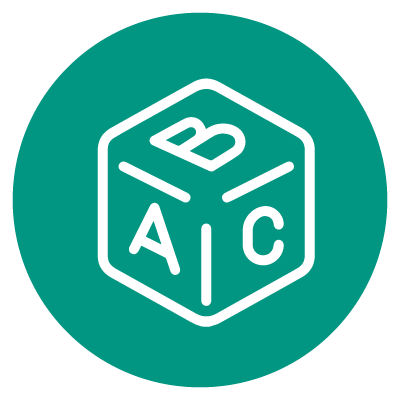
Bringing education closer: alternative solutions
Another educational pillar of Puerta de Esperanza is its flexible modalities programs. This type of education caters to youth and adults who have been outside the public and private education system for reasons of poverty, lack of opportunities, dropout, among others. This pillar preserves the distinct twist of Puerta de Esperanza: bringing education closer to those who need it most and find it most challenging to obtain.
One of the first programs was the literacy of mothers at La Terminal with CONALFA, a public institution that offers literacy sessions throughout the country. During the field process, the director noticed the common scams suffered by illiterate mothers with recycling agents. Hence the need to offer alternatives for these mothers' education.
Generally, CONALFA delivers its alternative education program at established locations. However, at Puerta de Esperanza, they knew the reality of La Terminal, where there are countless impediments for youth and adults to attend education centers without the daily concerns of their commercial duties. Therefore, they had to negotiate with CONALFA to use their program in an itinerant manner; that is, to bring the literacy sessions to the homes or businesses of the mothers.
However, the agreement broke down in 2017 because CONALFA demanded to establish a headquarters to gather the mothers. Therefore, they sought other alternative options until they connected with IGER. Specializing in providing education in radio formats and face-to-face accompaniments, they partnered with this private institution to supply alternative education to mothers and overage youth or those with incomplete schooling.
Unfortunately, the partnership lasted until 2021 due to the high costs required to obtain the educational material and services from IGER. However, they continued the mission for alternative education by connecting with PRONEA. This program is part of the Ministry of Education and provides distance education through virtual modules and remote courses. Although at Puerta de Esperanza, they recognize that it is not at the same pedagogical level as IGER, they maintain the commitment within their capabilities to bring education closer to illiterate mothers and youth excluded from public and private education.

Education is for everyone
For Puerta de Esperanza, education, whether reduced or fragmented by the dire problems of unequal cities, is a universal right.
Puerta de Esperanza has been characterized by its commitment to bringing education to the youth and adults participating in its programs. If they cannot receive education at an established site with equipment and school materials, where they meet with their educators and socialize with their peers, at Puerta de Esperanza, they are clear that education can be brought closer to the businesses and homes of the market.
As described, the school reinforcement and alternative education programs have itinerant modalities. The educators of Puerta de Esperanza move the programs to convenient, accessible places for their students. For example, the Walking Together program was a series of open workshops and non-formal education on the development of soft skills and mother's school.
Puerta de Esperanza has even taken its educational programs beyond La Terminal. In 2015, many families from La Terminal, who participated in the association's programs and lived in the market dump in extremely poor conditions, were advised and guided by the director to settle in Granjas Gerona, a community in the municipality of San Miguel Petapa. Despite leaving the market, Puerta de Esperanza did not forget these families.
"Several families went there. There were about 25 or 28 children who went to live. The follow-up program emerged. We try to continue supporting and ensuring they stay on the topic of education. So we made visits during the year, supporting the school cycle. The thing is that they continued studying. Two years ago [2021], the opportunity for workshops arose; we wanted them to receive the prevention workshops. We started teaching once every 15 days in the settlement."
Thus, the children of Granjas Gerona, who previously resided in La Terminal, have received school reinforcement and workshops on violence prevention [called Learning to Live Together] since 2015. Although the connection with these families remains, La Terminal, their place of residence, has not determined the cessation of support from Puerta de Esperanza thanks to the association's principles.
It is also noteworthy that for Puerta de Esperanza, education is built by everyone. A notable example of this principle is demonstrated by the institutional work of Puerta de Esperanza, from logistics to education, partly sustained by volunteerism.
Volunteers are mainly young people who have participated or are participating in the association's programs. They have volunteered out of passion, interest, and gratitude towards Puerta de Esperanza. Likewise, Amish and Mennonite foreigners3 have arrived and have temporarily volunteered in the educational programs, whose presence has been constant over the years.
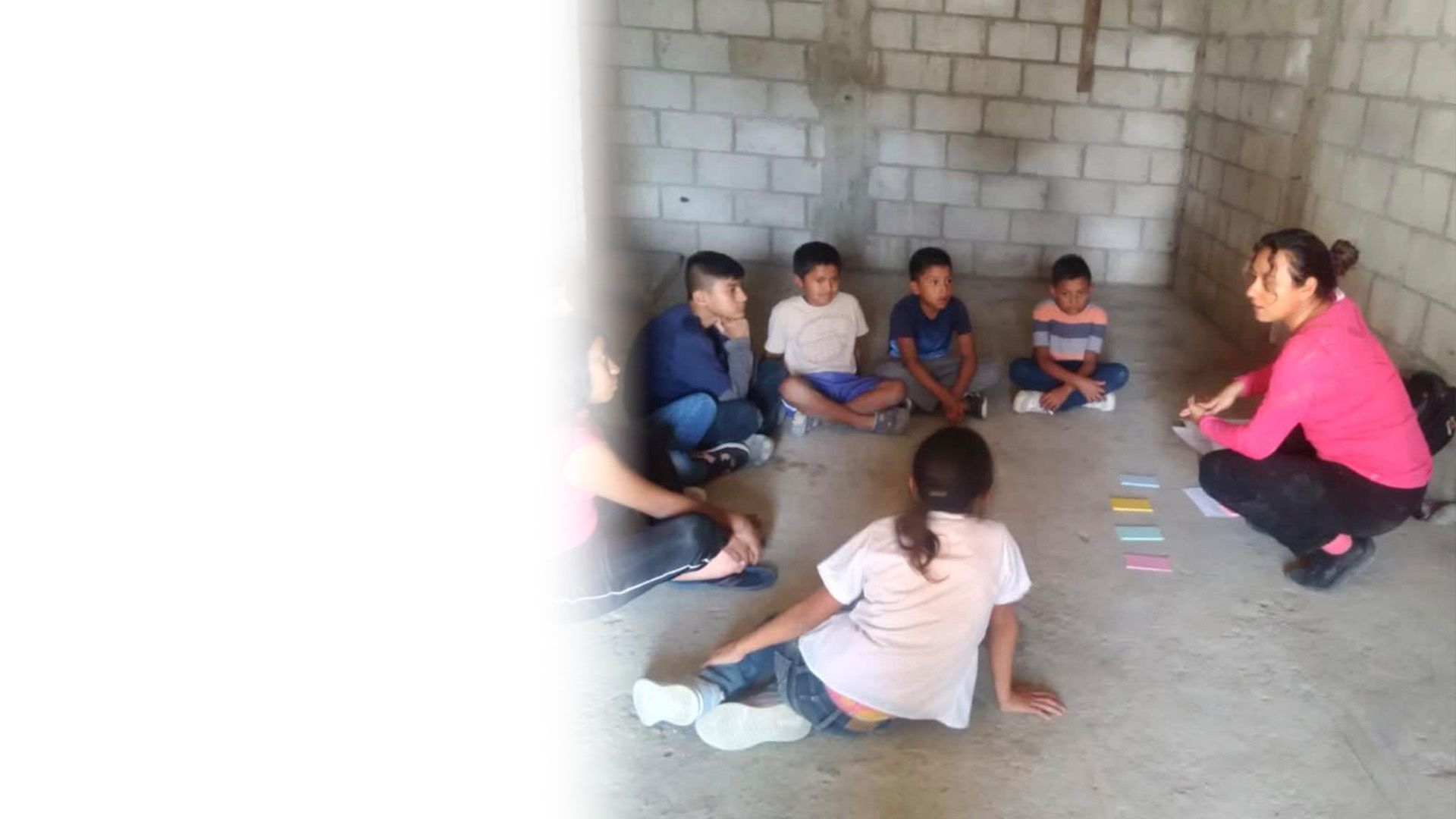
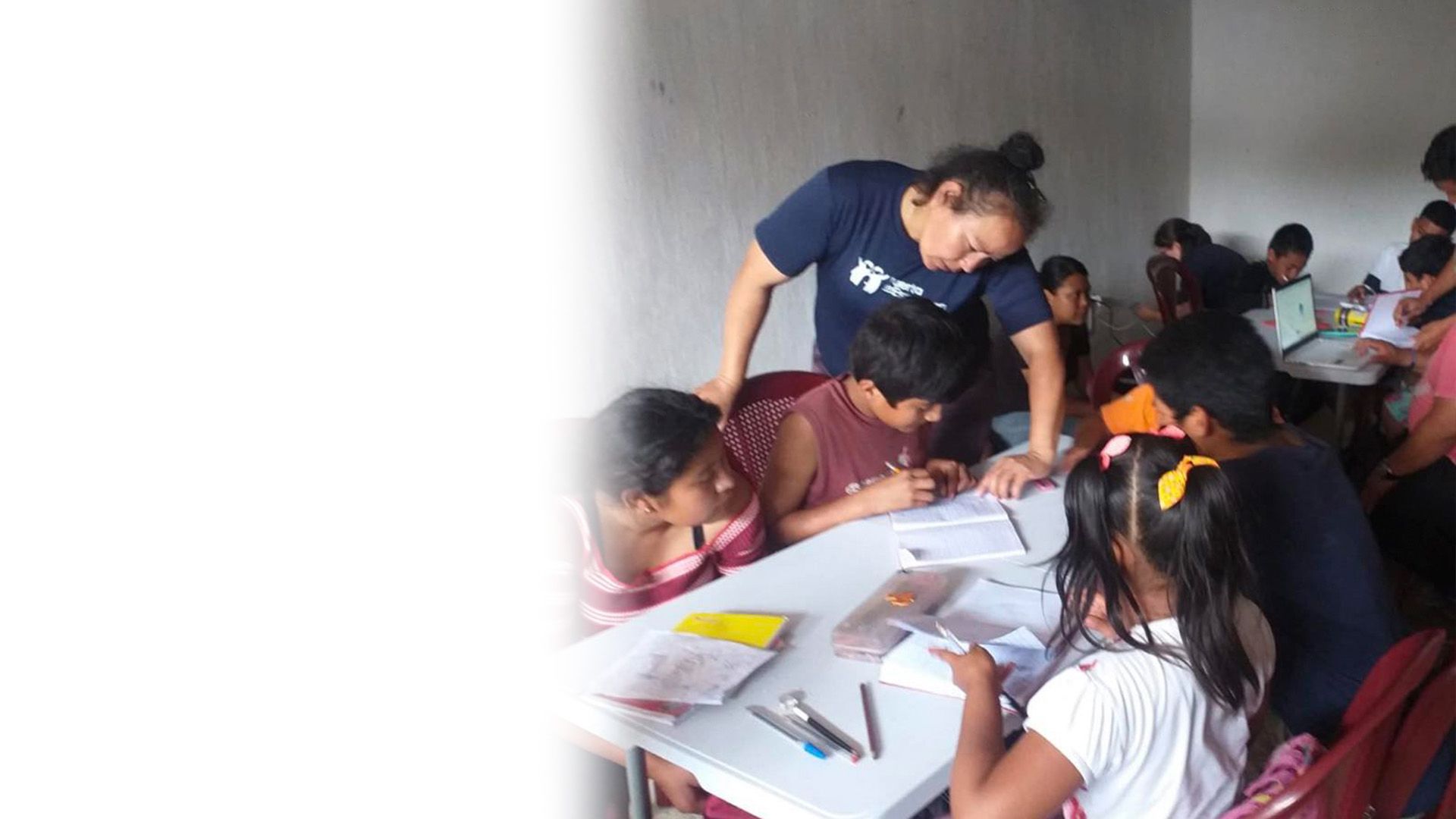
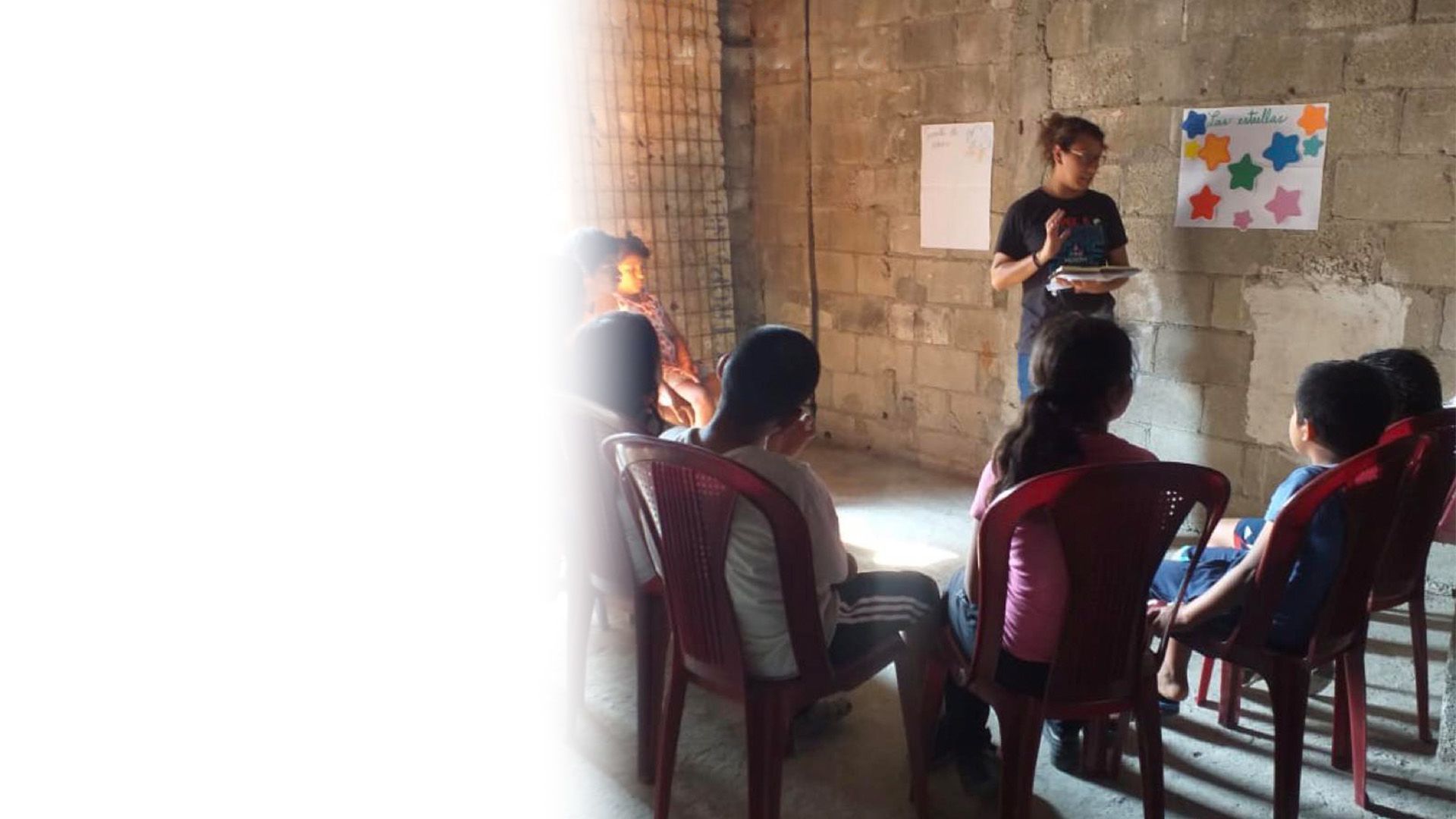

Puerta de Esperanza in pandemic times
Until 2020, the trajectory of Puerta de Esperanza described institutional growth from the creation of new educational programs and the strengthening of established ones, the connection with donors and civil organizations, the recognition in La Terminal for the community projection that has characterized the association from the beginning. Even thanks to the acquisition of new funds and inquiries with neighbors of La Terminal, they secured a long-dreamed-of space of their own located on the outskirts of the market.
However, at no time was it anticipated that a global pandemic would erupt in the way it did with COVID-19. Within days after the official leak of the virus to the country, the government officially decreed a national quarantine. The pandemic forced the closure of La Terminal, the largest market in the city. And along with it also came the abrupt interruption of Puerta de Esperanza.
Educating during the pandemic
When the pandemic assaulted Puerta de Esperanza, they were forced to pause all educational programs. However, the philanthropic and committed attitude characteristic of Puerta de Esperanza was not suspended at any time.
Part of the association's team agreed with the Ministry of the Interior to attend to the population left much more vulnerable by the pandemic. Thus, the current headquarters of Puerta de Esperanza was arranged as a shelter that housed and welcomed hundreds of street people. For five months full of logistical improvisations, tensions with neighbors, and health complications, Puerta de Esperanza dedicated itself to humanitarian work.
In August 2020, they finally resumed educational programs. Unaware of what the return would bring, they encountered a scenario of great difficulty, of acute concern.
They convened the youth for school reinforcement with concerns and fears about contagion, even if they prepared the best sanitary conditions. From the beginning, they noticed differences in the youth. The first difference they observed was in the emotional state of the youth. They had suffered emotional ravages from the pandemic confinement and the tragic stories that had occurred within the families. Stress, confusion, discouragement, frustration, abandonment were common feelings among the children and youth participants of Puerta de Esperanza.
"Since the pandemic came, I didn't want to know anything. I isolated myself from teachers, friends; I only went for food, sometimes I didn't even go. I didn't want to continue studying, it was useless to keep studying; I got discouraged. My mom got sick, and that was the excuse to drop out of school. However, there was an opportunity to recover, and I recovered thirteen subjects. For me, it was frustrating."
The other difference was the educational level of the children and youth. The team of Puerta de Esperanza noticed that the students had difficulty working on the school guides or outright did not know how to read. Thus, the school reinforcement was directed at teaching basic skills, accompanying even more closely the children and youth students, in addition to the unmovable requirement to comply with the school guides.
The team of Puerta de Esperanza also became emotionally entangled. They accumulated a lot of stress from the genuine efforts to recover the education lost in the children and youth of the educational programs. They became self-taught in pedagogical methods of early motor skills, basic literacy. The burden of teaching and supervising fell on them, as mothers and fathers, due to work obligations or economic needs, did not attend nor monitor their children's learning. Additionally, the team was frustrated by the school guides, which in the end seemed more an institutional requirement than a pedagogical tool.
On the other hand, they were forced to self-train in virtual formats and instruments. Over time and with the barely available resources in a country with limited and inaccessible technology infrastructure, virtuality fragmented the education of the children and youth as well as the teaching of the educators. Another additional burden for educators in training with urgency, students without devices to carry out the school guides with virtual sections, the improvisation to adapt the programs remotely... Virtuality was in no instance the pedagogical solution that supplanted face-to-face learning.

Puerta de Esperanza between the pandemic and the future
The pandemic undoubtedly exacerbated the problems facing education in a context like La Terminal. For Puerta de Esperanza, it did not mean completely closing its institutional work but was an unexpected interruption, a detailed review that adapted the educational programs. Not even a global pandemic stopped the fervent mission of the association to educate those who need it most in La Terminal.
After the pandemic, Puerta de Esperanza continued the alternative education with PRONEA, adapted the dynamics of school reinforcement at the new headquarters, and created innovative programs in La Terminal and Granjas Gerona.
In 2023, they opened a classroom for preschool children called Little Steps. This project was a response to the cooptation of the public daycare by the Vendors' Committee and politically affiliated officials. This problem reduced the number of children accepted at the daycare and limited registration and access due to being subject to the interests of the group that has taken over the institution. Additionally, the classroom is a program against the tragic sequel of child malnutrition unleashed by the pandemic. Therefore, the project gathers children to provide them with nutritional monitoring and school supplies.
They also began, more properly, a food axis. The food bank program is responsible for storing foodstuffs that are later distributed by the team of Puerta de Esperanza to families of the children and youth participants. They have also implemented feeding sessions in school reinforcement. Besides addressing an even more pressing need after the pandemic, it has been a strategy to negotiate and convince mothers to allow their children to participate in the association's programs.
Furthermore, they initiated the development of a new recreational axis. The vacation course was interrupted by the pandemic and, above all, by the extension of the school cycle. Now it extends to November, leaving very little time for extracurricular and extracurricular activities. Therefore, Puerta de Esperanza has considered establishing a recreational axis that includes sports and art programs, establishing the playful as an integral aspect of educational work.
Lastly, they recently implemented English courses once a week, as it is a fundamental resource for academic projection and job opportunities. In the case of the educators, they allied with Rafael Landívar University to receive training on education and pedagogy topics and benefit from dental, legal advisory, nutrition, and psychology services through the university's comprehensive care center.
With all this, Puerta de Esperanza has not stopped its educational work and its commitment to La Terminal. Everything points to their desire and effort to regain the growth that marked the trajectory before the pandemic. The new programs and institutional innovations are proof that the association has opened a gateway to a hopeful future.
Notes
General notes
This product was designed, visualized and written by the Population Council Guatemala team, with collaboration and feedback from the Puerta de Esperanza team, for the project Recovering Education in Central America: Activating Networks and Associated Groups (RECARGA).
The images presented were taken from Puerta de Esperanza's social networks, shared by its team or photographed by the Population Council Guatemala team. In external cases, the source was indicated.
Specific notes
1. On March 22, 2024, the Population Council team held a participatory workshop, lasting six hours, in Puerta de Esperanza. 11 people from the Puerta de Esperanza team and volunteers participated.
The objectives of the workshop were, through a guided group discussion and timeline, a) to collect the local history of La Terminal, b) to document the organizational and educational development of Puerta de Esperanza, especially during and after the pandemic and c) understand the educational ecosystem in which the partner is located.
One of the products was this case study in the form of a narrative history, prepared after a process of systematization of the workshop, bibliographic review, statistics, audiovisual archive and interview. The shorthand was a collaboration between Population Council and Puerta de Esperanza.
2. The history of the public daycare in La Terminal is illustrative of the relationship of the market with the State and the municipality. The director of Puerta de Esperanza narrated the situation with the daycare: "The land belongs to the municipality, but the care belongs to the Secretariat of Social Welfare. That has to do with the history of La Terminal. Arzú wanted to remove La Terminal and move it to CENMA. It became a feud. Árzú wanted to create housing, trades. At that time there was no political situation, and La Terminal joined forces so that Arzú would not remove it. So the municipality could no longer enter. "The municipality canceled the social programs of La Terminal. That daycare land belongs to the municipality; it was given to the central government as usufruct. The municipality did not want to assume it because of the conflicts."
3. Puerta de Espenza, by the way, has maintained religious relationships in its work. It is not only manifested in the religious belief of many of its members, but also in its most important alliance with Children's HopeChest. This philanthropic institution with a Christian streak has been fundamental for the association, through which they have received funds and contacts that have strengthened their educational work. It goes without saying that these religious aspects are not imposed on students with other spiritual beliefs.



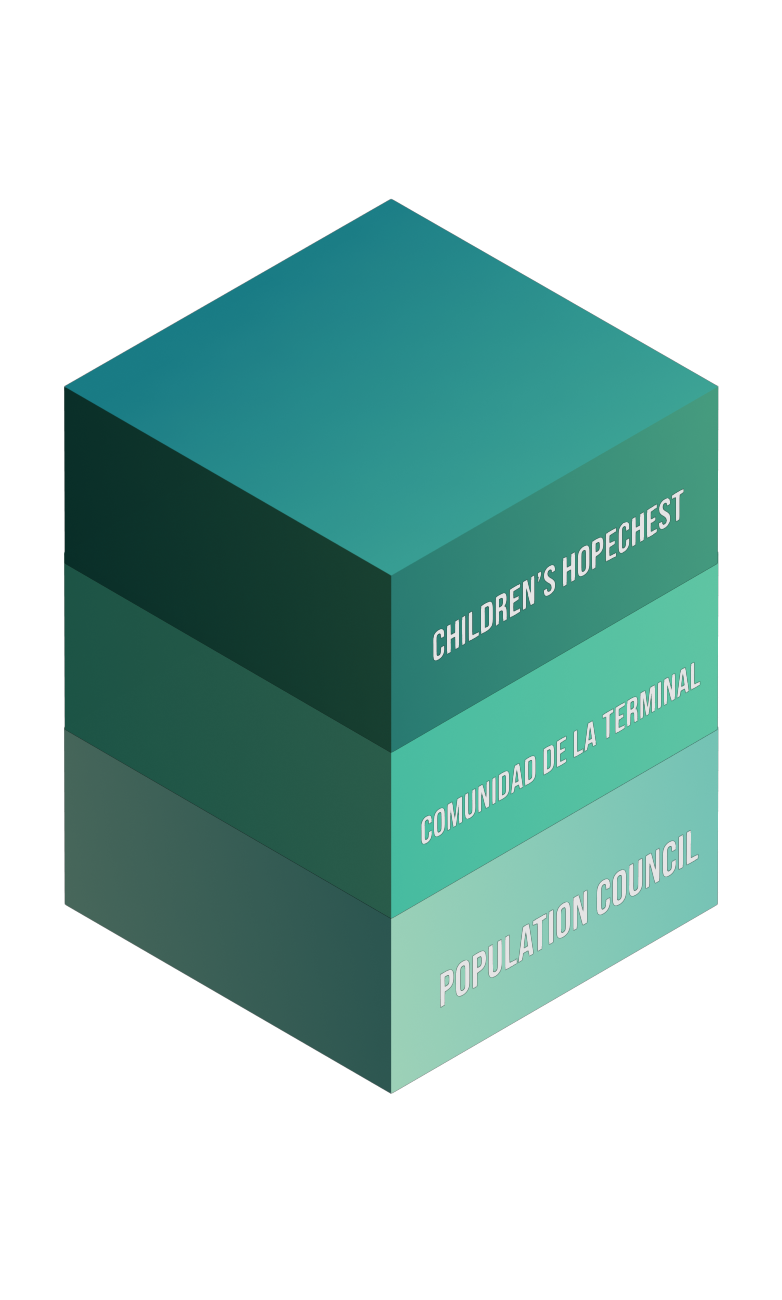
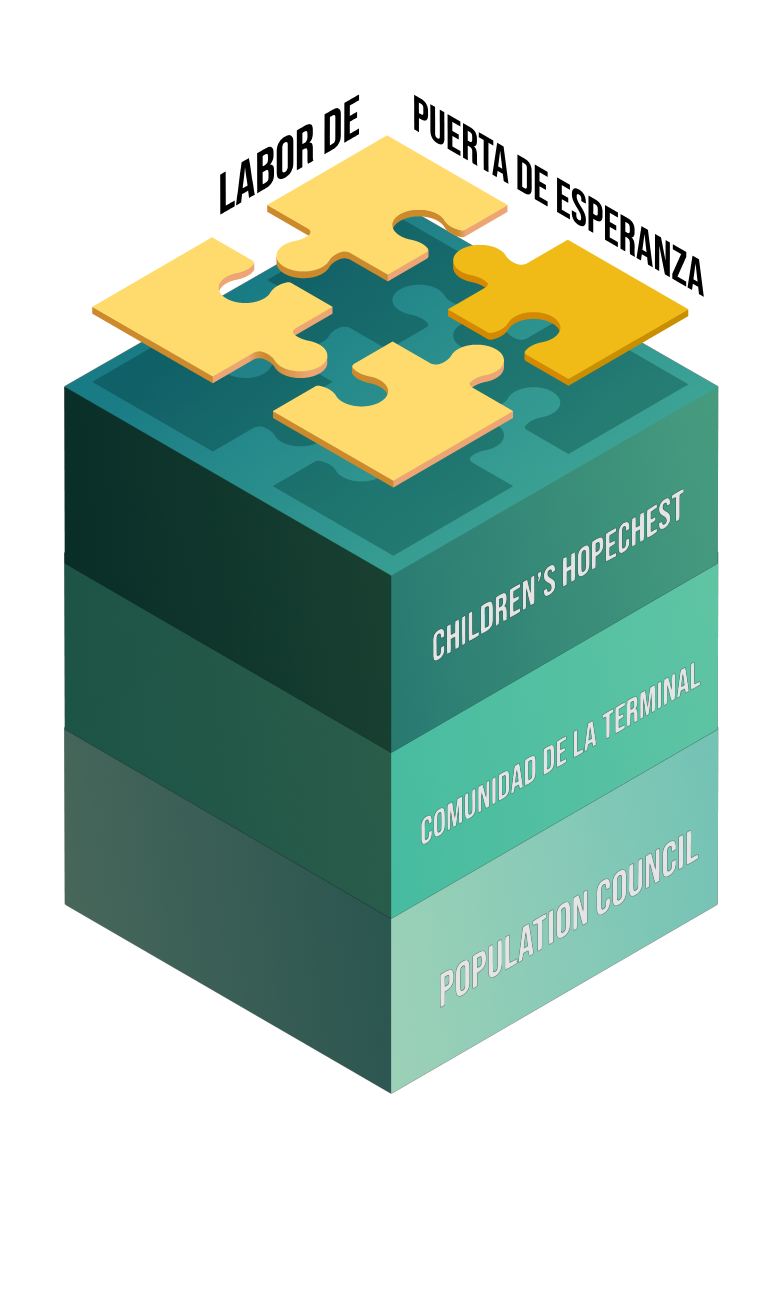
Bibliography
Camus, M. (1998). Ser indio en La Terminal. Alteridades, 15, Article 15.
Hernández, O. J. (2014). Trabajar y estudiar en La Terminal para no quedar fuera del sistema. Plaza Pública. https://www.plazapublica.com.gt/content/trabajar-y-estudiar-en-la-terminal-para-no-quedar-fuera-del-sistema
______ (2017). La Terminal nuestra de cada día. Plaza Pública. https://www.plazapublica.com.gt/content/la-terminal-nuestra-de-cada-dia
Instituto Nacional de Estadística Guatemala. (2018). XII Censo Nacional de Población y VII de Vivienda.
Marroquín, R. (2020). PODCAST En la Terminal temen más las medidas presidenciales que al COVID19, con o sin razón. Plaza Pública. https://www.plazapublica.com.gt/content/en-la-terminal-temen-mas-las-medidas-presidenciales-que-al-covid19-con-o-sin-razon
Montepeque. (2023). Sandra en La Terminal y un mitin fabricado. Plaza Pública. https://www.plazapublica.com.gt/cronica/informacion/sandra-en-la-terminal-y-un-mitin-fabricado
Municipalidad de Guatemala. (s/f). Mercado La Terminal. Historia. Cedulas Muniguate. Recuperado el 11 de abril de 2024, de https://cedulas.muniguate.com/index.php?c=sitio&a=ver&idSitio=1594
Organización Internacional del Trabajo & Fondo de las Naciones Unidas para la Infancia. (2020). La COVID-19 y el trabajo infantil: Un período de crisis, una oportunidad para actuar. OIT y UNICEF.
Patzán, J. M. (2021, septiembre 24). Poder político del Comité de Vendedores mantiene atemorizados a inquilinos del mercado La Terminal. Con Criterio. https://concriterio.gt/poder-politico-del-comite-de-vendedores-mantiene-atemorizados-a-inquilinos-del-mercado-la-terminal/
Toro, D. (2020, marzo 19). Comerciantes de la terminal viven el día a día y la cuarentena, por ahora, no es una opción. Prensa Comunitaria. https://prensacomunitaria.org/2020/03/comerciantes-de-la-terminal-viven-el-dia-a-dia-y-la-cuarentena-por-ahora-no-es-una-opcion/
